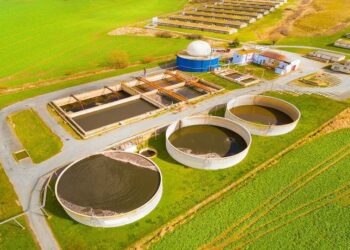Vard Electro is pleased to announce the award of the contract for an innovative hybrid battery power system with Atlantic Towing to be integrated on their vessel Atlantic Shrike. Atlantic Towing is the first company to implement this multiple mode application of battery technologies on a single vessel in the Canadian Offshore Oil and Gas Industry.
Through cooperation across borders Vard Electro is utilizing its vast technological experience to meet the project requirements. As the market continues to reach for novel technology to contribute in reducing emissions, Vard Electro is continuously developing new products to increase energy efficiency. For this project we have combined our previous engineering experience with local expertise to find the best solution for Atlantic Towing.
Atlantic Towing has received funding for the project through Petroleum Research Newfoundland & Labrador (PRNL) as a component of the offshore research, development and demonstration program of Natural Resources Canada’s (NRCan) Emissions Reduction Fund (ERF). The funding will support pioneering upgrades to the Platform Supply Vessel, Atlantic Shrike and allows the integration of battery systems into the vessel’s existing diesel-electric propulsion plant.
The vessel is based in Atlantic Towing’s homeport of St. John’s, Canada and is one of four modern diesel-electric builds.
Reducing Green House Gas Emissions
By utilizing its long experience as a system integrator, Vard Electro will deliver a containerized energy storage system for hybrid battery power. Supporting Atlantic Towing’s goal of reducing their carbon footprint the SeaQ Energy Storage System (ESS) will enable decreased fuel consumption and carbon emissions. The conversion will also reduce the vessel’s maintenance requirement without compromising operational performance.
“We share the ambitions of Atlantic Towing and are looking forward to implement the products and integrated solutions that will lead to a greener industry. The innovative design and extended battery size offer a range of benefits and will be a perfect fit for the operational profile of this vessel” says Peter Pilskog, Vice President Sales & Business Development, Vard Electro
The main system components are all fitted into the self-containing deck house to ensure a fast vessel installation while keeping a high focus on the quality. Control and monitoring of the hybrid system is handled by the energy management system (EMS) that communicates with the existing control systems onboard. The SeaQ ESS includes modes for peak shaving, spinning reserve and Zero emission transit. By using the batteries to absorb and dispense energy through load fluctuations and running the engines at optimal load, significant efficiency improvements in fuel consumption and emission reduction can be achieved.
SeaQ® Energy Storage System
SeaQ ESS is based on unique hybrid technology. The main purpose of the system is to reduce emissions, fuel consumption and increase safety. The SeaQ ESS store excess energy available in the vessel and use it later to reduce fuel consumption and optimize the performance of the vessel. It facilitates for operations with fewer engines online, and the engines online can operate at a more optimal load. Safety is increased due to the batteries’ ability to supply immediate energy in critical situations.
To simplify installation, integration and make energy storage systems more flexible, we have standardized design while innovatively tailoring the interface to the vessel’s systems.
The system can be used as a spinning reserve in DP operations, to enhance dynamic response, to perform peak shaving of loads, for strategic loading where the operating point of the gensets is optimized for battery only operations with zero-emission.
Sustainability
The demand for hybrid battery systems displays a steady increase, and it is important to manage the resources in both an ethical and environmentally conscious way. In our SeaQ ESS we will be able to recycle 99% of the battery weight. When a lithium-ion battery has served on-board a ship for its intended use and lifetime, the remaining capacity will be used for other purposes in other industries.



















































